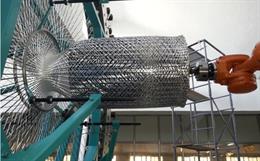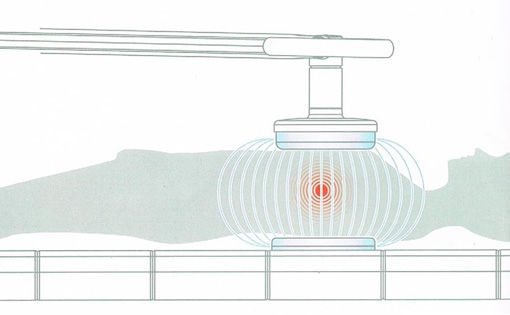Introduction
Features and properties ofSPMS
Shape Memory Polymer are rubbery innature, composed of long , entangled-polymer chains and these chains getsstretched under tension to accommodate the deformation.
- High elastic deformation ( strain up to 200% in most of the materials)
- Low cost, low density and biocompatibility and biodegradability
- SMPs are capable of recovering fully under low deformation level. If these are cooled below their glass transition temperature and deformed by external forces. Once the external forces are removed it will return to its previous unreformed state.
- When the temperature is greater than "Glass transition temperature" (Tg), the material enters the soft rubber phase and becomes easily definable.
Principle of Shape Memory Polymer (SMPs)
In shape memory polymers, typical shape recovery process begins at a temperature above Tg. At this temperature, the polymer is in a rubbery elastic state. The polymer is then deformed with an applied stress which creates a strain in the polymer. When cooled below Tg, the material autonomously returns to the original shape (shape recovery characteristic). This property of the material which repeatedly returns to its original shape is called "shape memory".
Structure and Mechanism of SMPs
Figure 1 demonstrates the progress of representative models developed for thermal-sensitive SMPs. The figure consists of molecular bonds such as covalent bonds and physical interactions. If the working temperature is higher than Ttrans, then the switching domains are flexible, resulting in an entropic elastic behaviour of the polymer network above Ttrans. If the sample has been previously deformed by application of an external stress, it snaps back into its initial shape once the external stress is released.
Classification of Shape Memory based on their mode of activation
• Thermo responsive shape memory polymers
The shape memory polymers which change in shape with the change of temperature are called thermo responsive shape memory polymers. By far these are the most common shape memory polymers.
• Electrical heating induced shape memory effect
The shape memory polymers are generally non conductive. So they are made conductive by blending with carbon nano powders. The electric current is converted into heat. They recover the original shape when an electric current is passed through the shape memory polymers.
• Light induced shape memory polymers
The shape memory polymers which are to be activated by light should have some photo sensitive groups which act as molecular switches. The shape memory polymers are stretched and illuminated by a light of wavelength greater than a fixed wavelength and the photosensitive groups form cross links.
• Magnetically induced shape memory effect
Non-contact triggering of shape changes in polymers has been realized by incorporating magnetic nanoparticles in shape memory polymers and inductive heating of these compounds in alternating magnetic fields.
• Water activated shape memory effect
The actuation of the polymer can be achieved by immersion in water. A shape memory polymer which has the permanent shape of a straight rod is programmed into a Z shape. The left part of the polymer is dipped into water and the right part is not dipped. There is a reduction of the glass transition temperature for the left part and it gets actuated i.e. gets back to its original form with the help of the room temperature water itself.
Application of the shape memory polymer in the textile
• SMP macro fibres
Significant progress has been made in manufacturing textile fibres from shapememory polymers through common spinning methods. It is easy to make a polymer fibre, as long as the polymer has adequate molecular weight, sufficient viscosity.
• SMP solutions for finishing fabrics
SMP solution is being directly used as a finishing agent to obtain valuable properties in different types of textile fabrics, such as cotton or wool. Another method for producing shape-memory fabrics is shape-memory finishing, which is a process that transfers the shape-memory properties from polymers to fabrics.
• SMP films, foams and laminated textiles
Shape-memory films and foams have a number of applications in laminated smart fabrics. The functions of SMP films applied to textiles include waterproofing, WVP, seam sewing, crease recoverability and crease fixing.
• Applications in breathable textiles
A higher comfort level can be achieved using shape memory polymer coated garments. By coating with shape memory polymers like shape memory poly urethanes, we can control the permeability to a large extent. We can have a high water vapour permeability at a higher temperature and a lower water vapour permeability at a lower temperature, thus making it useful to be used in both the conditions.
• Shape Memory Fabric (SMF)
The shirt with long sleeve could be programmed so that the sleeves shorten as room temperature becomes hotter. The fabric can be rolled up, pleated, creased and returned to its former shape by applying heat. Example: blowing air through hair dryer.
• SI Suits
A suit was developed to help the sailors on the ocean and sea. It adapts to the temperature variations and maintains a person's body temperature constant. The membrane gives optimal breathability in any given atmospheric condition.
• SMF yarns, fabrics and garment design
The appeal of the application of SMFs to textiles is their shape fixity and lengthwise recovery along the fibre, accompanied by changes in their stress. SMFs have been made into yarns by ring and friction spinning techniques, and the yarns have been applied to the knitting and weaving of fabrics.
Future outlook
SMPs represent a class of smart polymeric materials with a variety of chemical compositions, mechanisms and mechanical responses. SMP has accelerated growth in research activities and new SMPs with novel structures and diversified functionality. There is a significant progress in enabling SMP technologies such as materials, processes and techniques. However, success of these applications remains limited. As for the distinctive weak points, such as low recovery stress, we must look for new technologies to produce more powerful materials. While we cannot be unreasonable in our expectations for the near future, the existing problems can be overcome by finding more innovative applications that exploit the existing features and capacity of SMPs. This goal requires tremendous creativity and sharp vision as well as investment.
References:
- C Liu, H Qinb and PT Mather, J Material Chemistry, 2007, 17, 1543-1158.
- A Lendlein, A M Schmidt, M Schroeter and R Langer, J Polym. Sci., Part A: Polym. Chem., 2005, 43, 1369.
- A Lendlein, and S Kelch Angew, Chem. Int. Ed., 2002, 41, 2034.
- JP Gong and Y Osada, "Polymer Sensor and actuators", Springer-Verlag, Berlin, Germany, 2000.
- JV Humbeeck and J Cederstrom, in Proceedings of SMST-94: The First International Conference on Shape Memory and Superelastic Technologies, Pacific Grove, CDA, USA, 1994, 16.
- K. Kobayashi and S. Hayashi, 'Acoustic Sensors Using Polymers with Shape Memory', Jpn. Pat, 02183132, 1990.
- Lu J, Hu JL, Fibres & Textiles in Eastern Europe, 2010,18,3942.
About the author
Swati Sharma has finished her M.Tech from Textile technology and Management, NIT Jalandhar.








